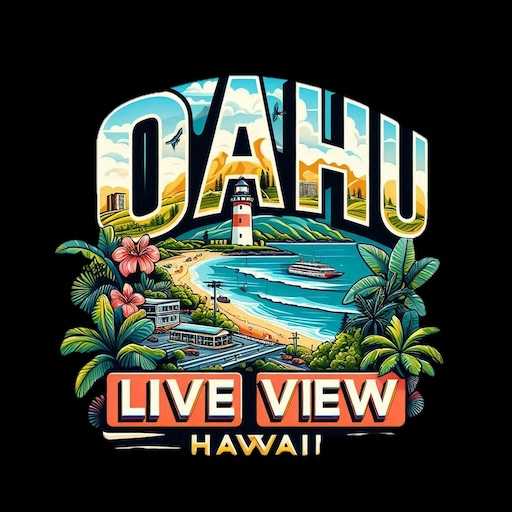Kawailoa, Oahu Webcams
Kawailoa FAA Webcam
Kawailoa: A Journey Through Oahu’s Rich Historical Tapestry
Kawailoa, Oahu Webcams. Kawailoa, a picturesque region located on the North Shore of Oahu, is an area deeply rooted in Hawaiian history, culture, and natural beauty. With its rolling hills, lush valleys, and pristine beaches, Kawailoa has witnessed centuries of transformation, from the early days of Native Hawaiian settlement to its role in contemporary Hawaii. This historical narrative captures the essence of Kawailoa, tracing its path through time.
Early Settlement: Harmony with the Land and Sea
In ancient Hawaii, Kawailoa was part of the ahupua’a land division system, a sustainable approach to managing resources that extended from the mountains to the ocean. This system allowed residents to live in harmony with nature, utilizing the fertile soil for agriculture, the freshwater streams for irrigation, and the abundant ocean for fishing.
The name “Kawailoa” translates to “the long water,” referencing the streams and freshwater sources that flow through the area. These waters were vital for the cultivation of taro, a staple crop in traditional Hawaiian diets. Lo’i kalo (taro patches) dotted the valleys, while breadfruit, sweet potatoes, and bananas thrived in the fertile uplands.
Kawailoa was not only a place of sustenance but also of spirituality. Heiau (sacred temples) were built in the area, serving as sites of worship and cultural gatherings. These temples were dedicated to various Hawaiian gods, including Kane, associated with water and life, and Ku, the god of war and prosperity.
The Arrival of Western Influence
The arrival of Western explorers in the late 18th century marked a turning point for Kawailoa and the Hawaiian Islands as a whole. Captain James Cook’s voyages in the Pacific introduced new technologies, goods, and cultural practices that began to reshape Hawaiian society. By the early 19th century, Kawailoa, like much of Oahu, experienced significant changes as missionaries, traders, and settlers arrived.
Christian missionaries played a prominent role in influencing Hawaiian culture, establishing schools and churches in nearby communities. These efforts introduced Western education, religion, and language to the islands, leading to both opportunities and challenges for Native Hawaiians. Traditional customs, such as hula and the Hawaiian language, faced suppression, while new agricultural practices and crops, including pineapple and sugarcane, were introduced.
The Plantation Era and Economic Shifts
The late 19th and early 20th centuries saw Kawailoa become part of Hawaii’s burgeoning plantation economy. Sugarcane and pineapple plantations flourished across Oahu, transforming the landscape and bringing waves of immigrant laborers from China, Japan, Portugal, the Philippines, and other regions. While Kawailoa itself was not a major plantation hub, its proximity to agricultural centers like Waialua and Haleiwa ensured that the region played a role in the island’s economic development.
Plantation life was marked by hard work, long hours, and a blending of cultures. Immigrant workers brought their traditions, foods, and languages to Hawaii, creating a multicultural society that enriched Kawailoa and the surrounding areas. Despite the economic opportunities, the plantation era also brought environmental changes, including deforestation and water diversion, which impacted the region’s natural ecosystems.
Surfing and the Birth of a Global Phenomenon
By the mid-20th century, Kawailoa and Oahu’s North Shore gained international recognition as a surfing paradise. The area’s pristine beaches and powerful waves, including those at nearby Waimea Bay and Sunset Beach, attracted surfers from around the world. Kawailoa became a gateway to these iconic surf spots, helping to cement the North Shore’s reputation as the “Seven-Mile Miracle.”
Surfing, deeply rooted in Hawaiian culture, found new life as a global phenomenon. Pioneers of modern surfing, such as Duke Kahanamoku and Eddie Aikau, helped popularize the sport, drawing attention to Hawaii’s unique waves and surf culture. Kawailoa played a supporting role in this evolution, offering access to the ocean and contributing to the area’s vibrant community of surfers and water enthusiasts.
Environmental Conservation and Modern Developments
In recent decades, Kawailoa has become a focal point for environmental conservation efforts. Recognizing the importance of preserving its natural beauty and resources, community members and organizations have worked to restore native ecosystems, protect endangered species, and promote sustainable land use.
Programs to reforest native plants and restore lo’i kalo have aimed to revive the area’s cultural and ecological heritage. The resurgence of interest in traditional Hawaiian practices, such as mālama ‘āina (caring for the land), has further strengthened efforts to protect Kawailoa’s unique environment.
At the same time, modern developments and tourism have brought both opportunities and challenges. Kawailoa’s proximity to popular destinations like Haleiwa and the North Shore’s iconic beaches has increased its visibility, drawing visitors eager to experience its natural wonders. While tourism provides economic benefits, it also raises concerns about overdevelopment and the impact on local ecosystems and communities.
Kawailoa Today: A Community Rooted in Tradition
Today, Kawailoa remains a place of quiet beauty and cultural significance. Its rolling landscapes, dotted with farms, homes, and natural preserves, reflect the enduring connection between the land and its people. The spirit of aloha, deeply ingrained in Hawaiian culture, continues to guide the community as it navigates the balance between preservation and progress.
Kawailoa’s history is a testament to the resilience of its people and the richness of its heritage. From its ancient roots as a self-sustaining Hawaiian settlement to its role in shaping modern Hawaii, Kawailoa embodies the values of harmony, adaptability, and respect for the land. As visitors and residents alike explore its trails, streams, and shores, they are reminded of the timeless beauty and enduring legacy of this remarkable corner of Oahu.
For more information, visit the official Oahu website.
